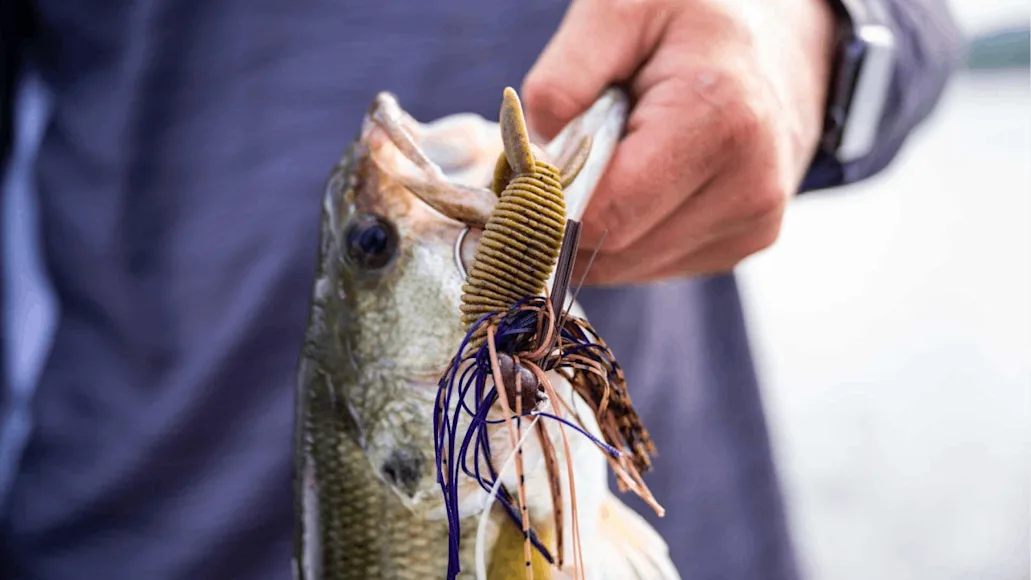We may earn revenue from the products available on this page and participate in affiliate programs. Learn more
There’s something about flipping, pitching, dragging, swimming, and casting a jig that screams bass fishing. And there’s a good chance that even as you’re reading this, you can recall the thump of the last bite you got on a jig. Regardless, the term jig is as vast as it is invigorating. This style of bait covers a wide spectrum of lures designed for targeting black bass. Everything from a football jig to a swim jig is lumped into one massive category, even though the gear used, as well as the techniques themselves, vary widely.
For the purpose of this piece, we defined jigs as any artificial lure that has a weight molded onto a hook to form a jighead with a weed guard protruding from the head and a skirt made of silicone or rubber. With this in mind, we excluded vibrating jigs from this list. (But don’t worry, we already have a comprehensive roundup of chatterbaits.) We also left hair jigs off this list since they have few similarities with the other jig styles presented. Here are all the other best bass jigs you can get for both largemouth and smallmouth.
Best Swim Jig: Dirty Jigs No-Jack Swim Jig
Best Finesse Jig: Jewel Baits Tactical Finesse HD Jig
Best Casting Jig: Dirty Jigs Luke Clausen Casting Jig
Best Skipping Jig: Berkley Powerbait Skippin' Jig
Best Football Jig: Bo’s Jigs Football Jig
Best Flipping/Pitching Jig: Dirty Jigs Tour Level Pitchin’ Jig
Best Punching/Heavy Grass Flipping Jig: Gambler Double Weedguard Flipping Jig
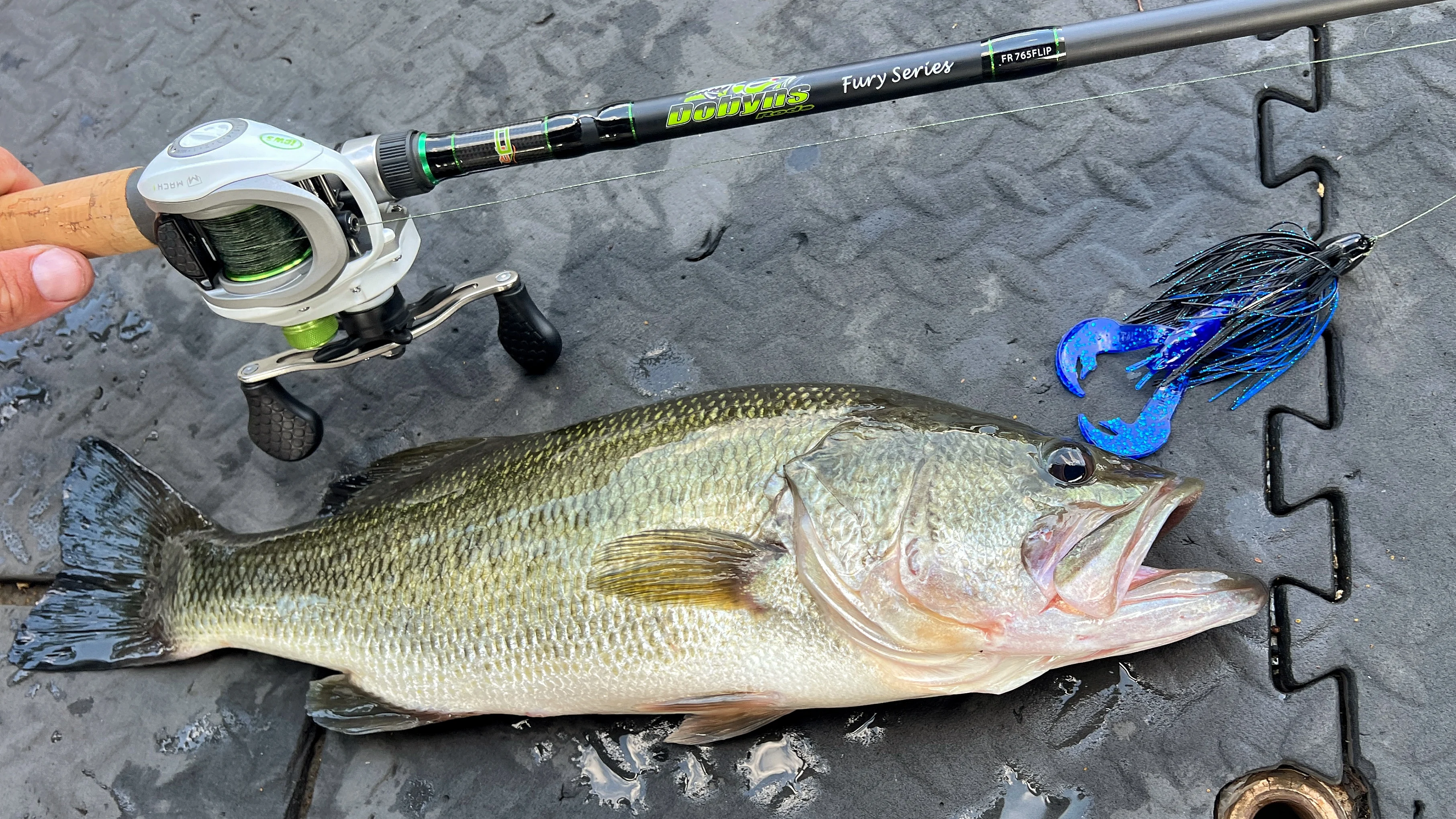
Best Swim Jig: Dirty Jigs No-Jack Swim Jig
I discovered Dirty Jigs No Jack Swim Jig years ago, and it has held a steady spot in my tackle box ever since. Simply put, this is the best swim jig on the market. The head design is narrow and pointed with a vertical line tie—all key elements to help the bait track true and slip through heavy cover.
But the business end of this bait is what really sets it apart. The hook on this jig is sharp and beefy, capable of hauling big bass out of thick grass. There are dozens of color choices and two different sizes available. The 3/8 ounce works best when fishing over cover, and the 1/2 ounce is better for swimming a jig along the edges. For six bucks, this is a fantastic jig for the money, and there's no other swim jig I trust more. Check out the No Jack Swim Jig in action in this video review of the Fenwick World Class Casting Rod.
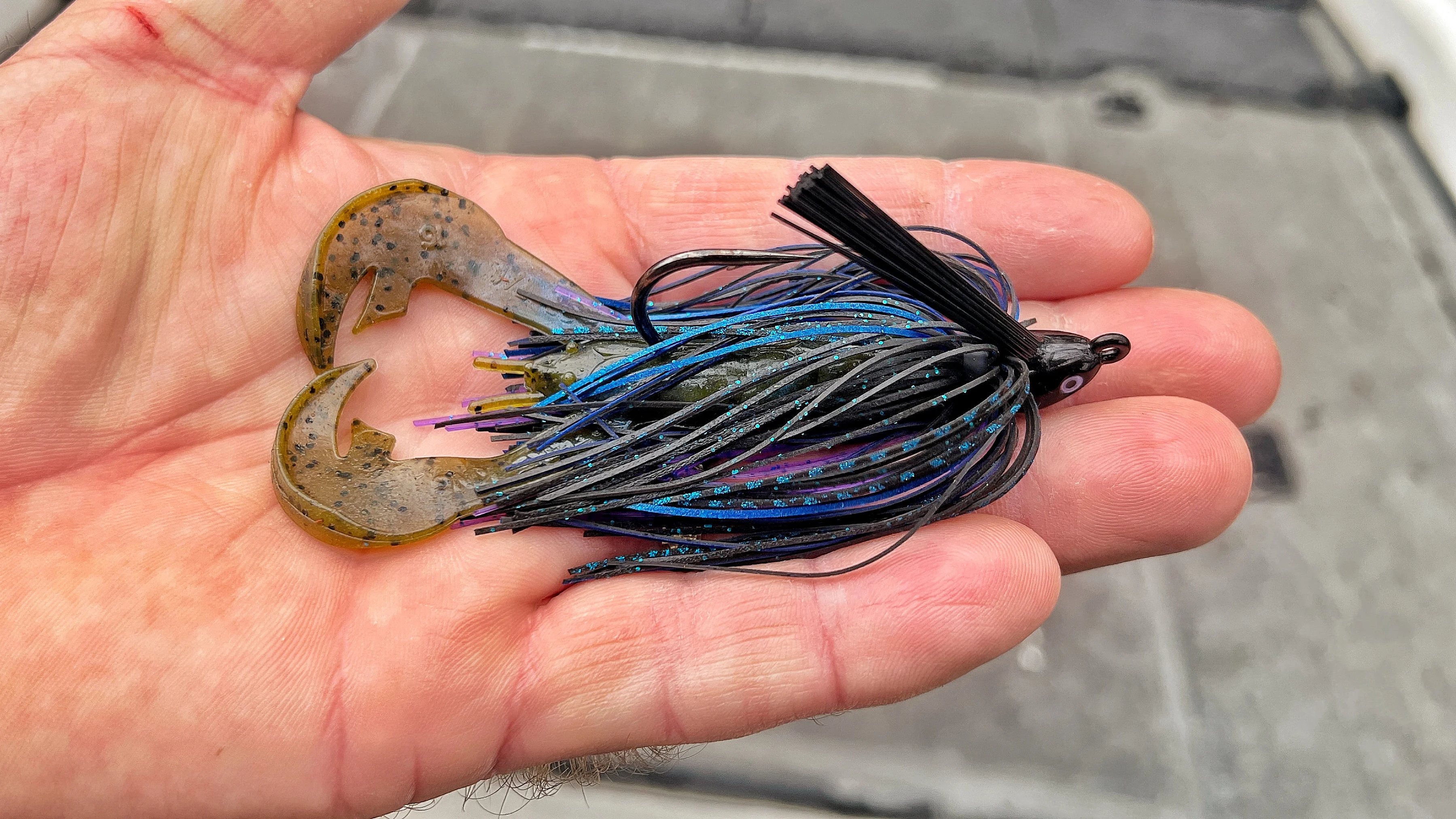
Best Finesse Jig: Jewel Baits Tactical Finesse HD Jig
Finesse jigs are the perfect compromise when you need to downsize but you want to keep a baitcaster in your hand. These jigs (also often referred to as ball head jigs) typically have round heads and smaller profiles. You’ll notice that they have a spider skirt a lot of times too, which just refers to the trimmed skirt material around the head. And the Jewel Baits Tactical Finesse HD Jig is a perfect example of this style of bait.
I’ve used several different finesse jigs over the years, but I haven’t found one that stands up as well to big bass as the Tactical Finesse HD Jig. For its size, it still has a heck of a hook in it. The orientation of the eye paired with the shape of the head helps it come through rocks well. And the fact that you can get them two to a pack for about six bucks is icing on the cake.
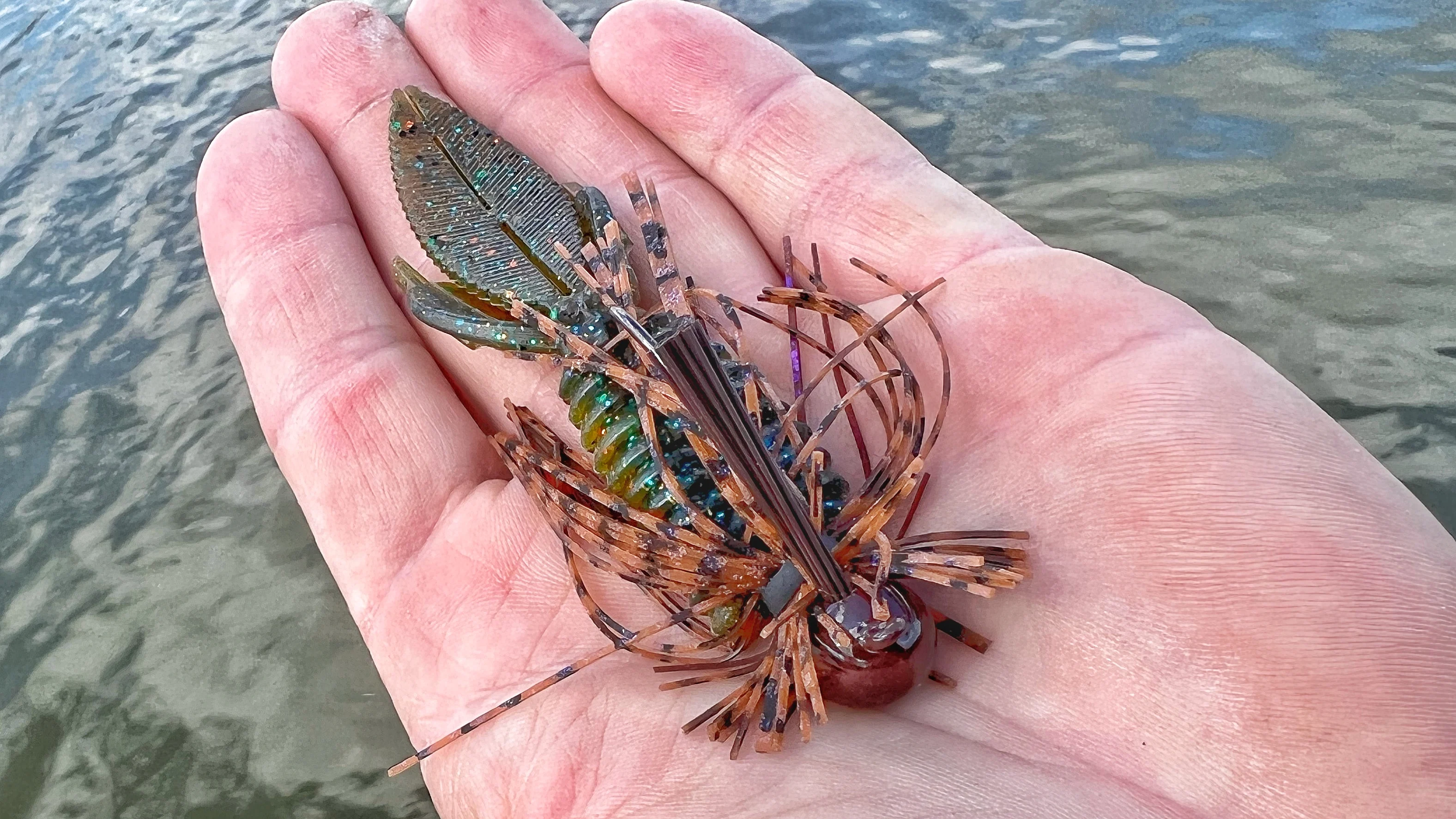
Best Casting Jig: Dirty Jigs Luke Clausen Casting Jig
A casting jig is perhaps the most versatile of all jig types. With a good casting jig, you can effectively fish the same water that you would use a football jig, skipping jig, pitching jig, and even a swim jig. Now these other jigs aren't obsolete, but a good casting jig is serviceable in each of those situations. Think of casting jigs as the do-it-all bait in this category of lures.
While it can do every technique fairly well, the Luke Clausen Casting Jig is most effective when dragged through brush. The vertical line tie positioned on top of the jig’s head, paired with the scooped head shape and smaller, thinner hook, makes this jig ideal for casting out far and dragging through brush and timber. The design keeps the bait from snagging on the cover, and the thinner hook penetrates the fish better on longer casts. There are 18 color choices in Clausen’s jig and two sizes: 7/16 and 9/16. And while I've been impressed with other casting jigs, the Dirty Jigs Luke Clausen Casting Jig sits at the top of the list.
Best Skipping Jig: Berkley Powerbait Skippin' Jig
A good skipping jig has a scooped head that’s wider than it is thick with a horizontal low-profile line tie. You also want the jig to have a stout hook so that it can haul a bass out from under cover. Personally, I prefer a little more skirt to a skipping jig to help slow it down on the fall.
The Berkley jig is slightly cheaper and has a bulkier skirt, so it gets the nod for best at the moment. However, the Greenfish Tackle Hand Tied HD Skipping Jig has a hand-tied skirt, which is a nice touch and worth an honorable mention. Each bait has plenty of color choices and is priced around 5 dollars.
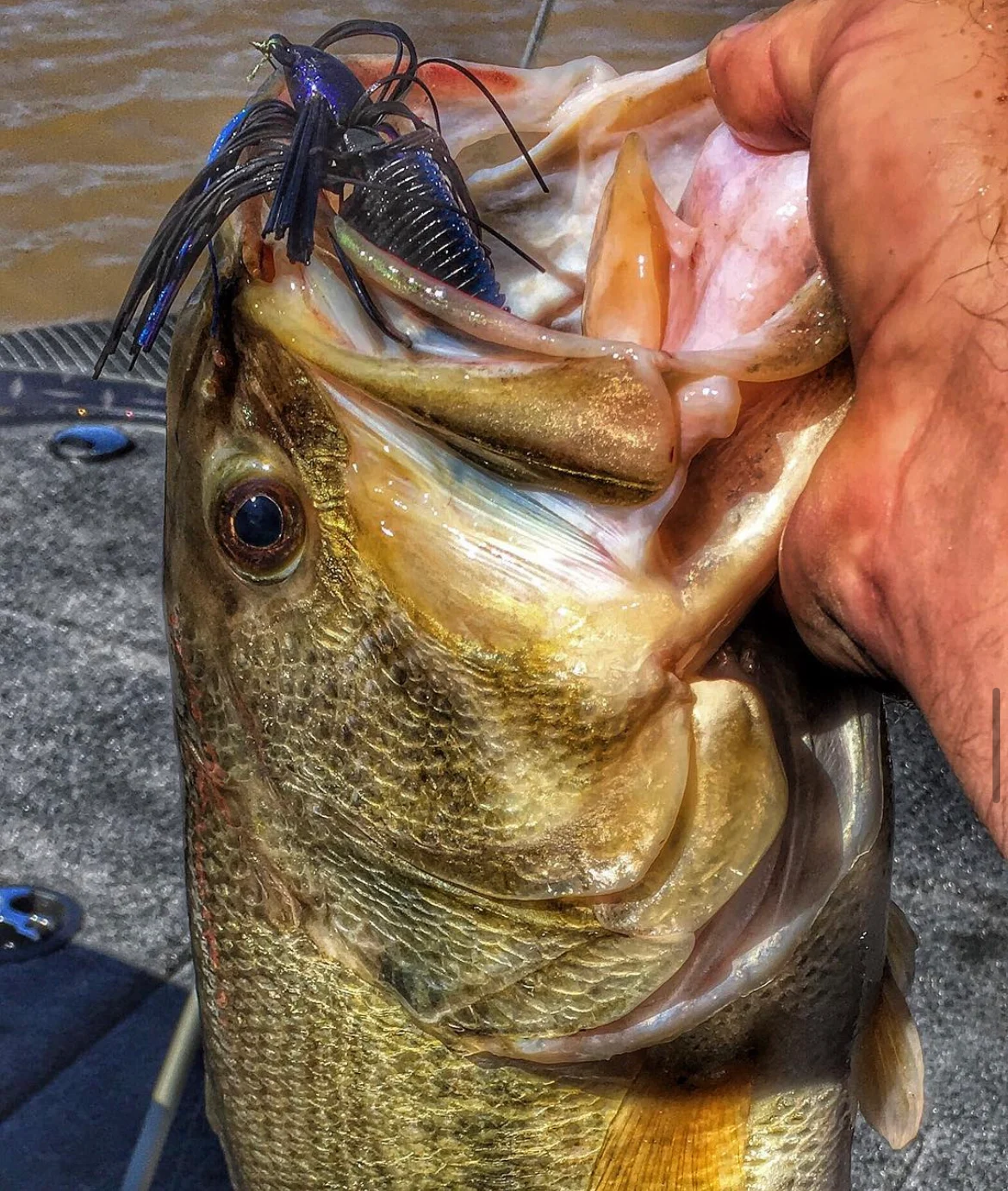
Best Football Jig: Bo’s Jigs Football Jig
I’ve got a pretty sweet little nugget for you here. I just tracked down a company that I honestly thought was no more—Bo’s Jigs. I found their football jig in a local tackle shop over a decade ago and fell in love with it. Bo’s Jigs was just a little mom-and-pop brand in north Alabama back then, but that jig was better than any brand name football jig I ever fished with at the time—and it still is.
This bait has all the makings of a great football jig: a sharp and strong hook, a horizontal weed guard placed high on the head, and a bulky skirt. Back in 2013, I weighed in the second biggest bag of my life on Lake Guntersville—26 pounds and 6 ounces. Three 6-pounders in that bag came on a ¾-ounce Bo’s Jigs Football Jig in Karen’s Craw. This is a fantastic bait that I’m thankful to have relocated. You can get your own at bosjigs.com.
Best Flipping/Pitching Jig: Dirty Jigs Tour Level Pitchin’ Jig
Though this jig works fairly well in grass, the head design is more intended for pitching to wooded areas. The low profile eye and scooped head keep the line-tie out in front of the bait, which helps the jig come through and over cover better. Jigs with pointier heads are more suited for flipping and pitching in vegetation. The Tour Level Pitchin’ Jig has a bulky skirt, a solid hook, and over three dozen color options. Plus, each one only costs $5.49. With a great design, three size options (⅜, ½, and ⅝), and a color to match any hatch on the planet, this is the best jig for pitching to shallow targets.
Best Punching/Heavy Grass Flipping Jig: Gambler Double Weedguard Flipping Jig
The best punching jig I ever used was the Medlock Double Weed Guard Flipping Jig. I even caught my personal best tournament bass with it on Lake Okeechobee in the Bassmaster Wild Card in 2013. She weighed 9 pounds 1 ounce and put up one heck of a fight. You can see that catch here.
The double weed guard is what made the Medlock jig so special. By spreading two thinner weed guards out instead of using one thick weed guard, Medlock’s design kept debris from reaching the hook while also creating a clear path for the hook to come through the gap on the hookset. Unfortunately, that jig is hard to find now. So what's the next best thing?
The Gambler Double Weed Guard Flipping Jig and the Fitzgerald Fishing Mega Tungsten Flipping Jig have similar designs. Each has two weed guards, like the Medlock jig, and both are readily available. Pick either one of these baits up, and you won't be disappointed.
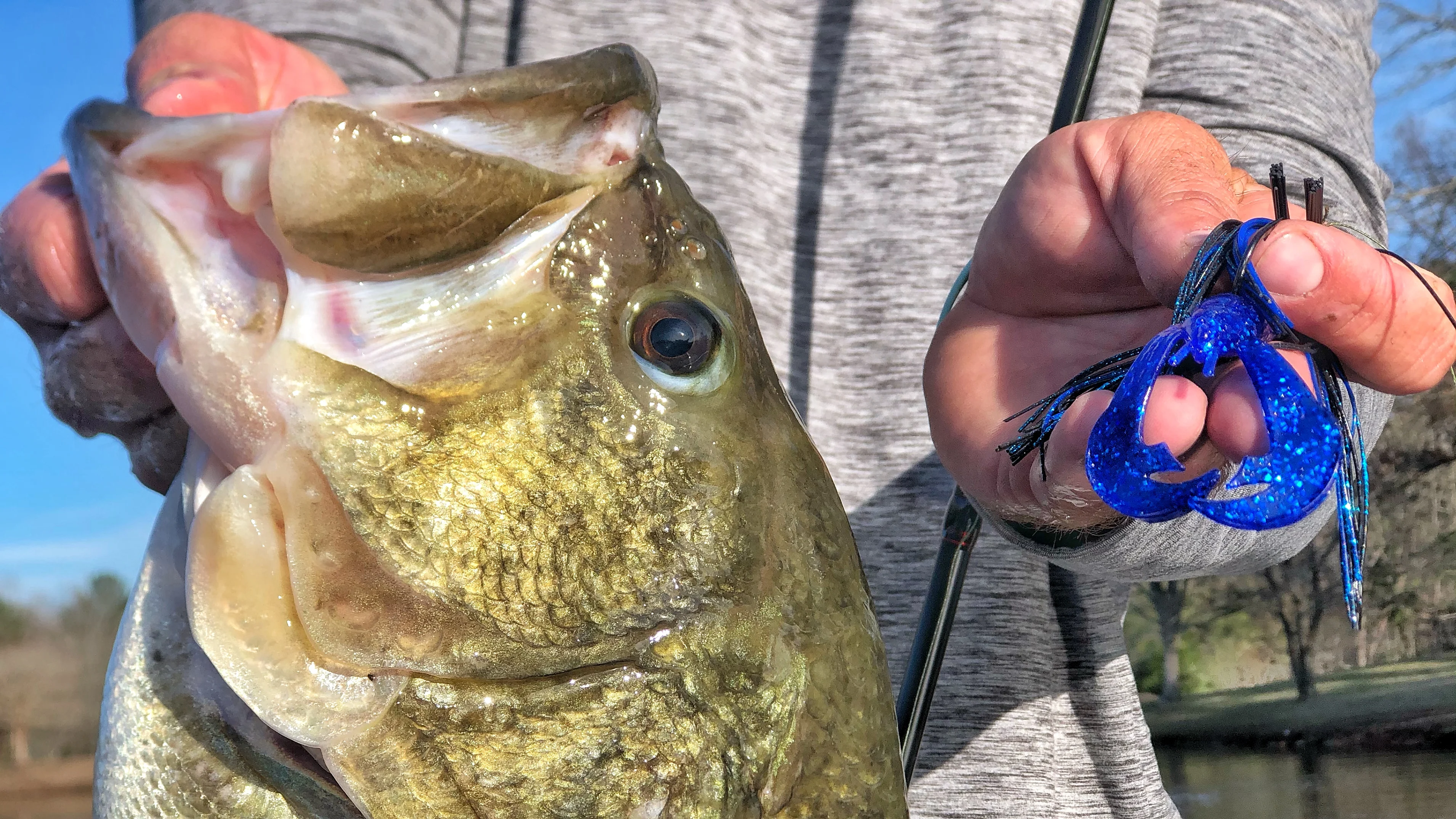
How We Tested Bass Jigs
You can fish a jig in a variety of ways to target big bass—and I've done them all. Through that time, I've narrowed down specific jigs that I like for each style of jig fishing. My favorites, which you read about above, were selected on decades' worth of recreational and competitive bass fishing. While many of the picks on this list are older designs, I made sure to include newcomers that have impressed me on the water. I've fished with every bait on this list and I am confident in each for the specific situations they are designed for.
FAQs
Q: What color jigs are best for bass?
For imitating bluegill and other bream, green pumpkin and black/blue work well. Brown jigs with a few bright strands of orange or red do a good job of mimicking crawfish. And then brighter white and chartreuse baits are best suited when fishing around shad, herring, and other pale baitfish.
Q: How do I choose a bass jig size?
Your jig size selection should correlate with forage in the area most of the time. If you’re fishing around threadfin shad, for example, you don't want a massive mop jig—a good standard-size swim jig is plenty in that situation. However, if you’re flipping for big bass that are feeding on larger bluegill, using a bigger jig with a bulkier skirt and a large trailer is a good idea.
The breed of the bass can play a factor in the size of the jig you’ll want to choose too. If you’re fishing for largemouth, a big mop jig can be super effective. But, when targeting smallmouth or spotted bass (both of which have smaller mouths than largemouths), you may find a finesse jig is more effective simply because the bass can get their mouths around it more easily.
Q: How heavy should my jig be?
You’ll want to choose the weight of your jig primarily based on the depth you’re fishing. For swim jigs along the surface, ⅜-ounce baits work really well. If you want to fish a football jig out in 20 feet, however, you’re better off with a heavier, ¾-ounce bait. There are a few other factors to consider like the desired rate of fall, the thickness of the cover, and current. If you want your bait to fall slowly, like when skipping a jig under a shallow dock, for instance, go with a lighter bait (⅜ ounce). But, when fishing around heavy vegetation in the exact same depth of water, you may need a ¾-ounce jig to effectively get the bait down to where the fish are.
Lastly, there are times when a ¾-ounce football jig might be the obvious first choice because of the depth, but because of the finicky mood of the fish, you may find that a ⅜-ounce finesse jig is more effective.

Final Thoughts
Jigs can be used in mere inches of water out to dozens of feet. There are jigs designed to imitate everything from a crustacean crawling on the bottom to a shad scurrying on the surface. And you can catch bass on jigs in winter, spring, summer, and fall. But you want the right jig for the job.
Pay close attention to the head design of a jig. This will ensure that the jig you’re selecting is suited for the type of cover you’ll be fishing around. Quality weed guards, bait keepers, and skirts are important too. But the most important part of any jig is the hook. Make sure the hook is sharp and strong, as well as adequately designed for the task at hand.
For jigs that will be thrown farther out on lighter lines, thin wire hooks will penetrate the fish’s mouths more effectively while still being sufficient in strength. But for up close and personal techniques in heavy cover, a jig with a bold hook is better equipped to stand up to a big bite and haul it in. No matter the case, you can find a bass jig for any situation in the list above.
Why Trust Us
For more than 125 years, Field & Stream has been providing readers with honest and authentic coverage of outdoor gear. Our writers and editors eat, sleep, and breathe the outdoors, and that passion comes through in our product reviews. You can count on F&S to keep you up to date on the best new gear. And when we write about a product—whether it’s a bass lure or a backpack—we cover the good and the bad, so you know exactly what to expect before you decide to make a purchase.

